Virtana, this week, revealed it is acquiring Zenoss in a move that combines two providers of artificial intelligence for IT operations (AIOps) platforms.
While both companies provide AIOps platforms capable of being applied across hybrid cloud computing environments, the two companies have mainly focused on cloud computing and on-premises IT environments, respectively.
Virtana CEO Paul Appleby said the combined entity will be able to advance an observability platform that leverages multiple types of AI models to surface actionable insights across increasingly complex IT environments.
As AIOps continues to evolve, platforms are combining predictive, causal and generative AI models to not just identify the root cause of issues but also help IT operations teams to prevent them from occurring in the first place, noted Appleby.
Generative AI technologies, meanwhile, are providing access to natural language interfaces that make AIOps platforms more accessible, he added.
Virtana is already collecting more than 1,600 different types of telemetry data into its AI models, which, with the acquisition of Zenoss, will be further extended into a wider range of applications, noted Appleby.
In general, IT teams need to move beyond using a mix of isolated tools to monitor a set of pre-defined metrics. Observability platforms, in contrast, leverage machine learning algorithms to continuously analyze anomalies indicative of misconfigurations, capacity limits, or cascading service degradation.
Previously, IT teams investigating these issues would need to convene a “war room” where various IT departments would need to prove their innocence. In the event any of these issues resulted in a mission-critical application being taken offline, the length of time needed to manually determine the root cause simply takes too long in an era where businesses are depending on software to drive revenue, said Appleby.
In fact, the overall complexity of IT environments has reached a level where it is simply impossible to successfully manage applications and infrastructure without relying on AI technologies, he added. A Futurum Research report notes that 71% of organizations are also reevaluating where cloud workloads run, mainly because of cost and compliance concerns. At the same time, two-thirds (66%) are planning to migrate on-premises applications to the cloud.
In the absence of any unified approach to managing IT, the need for AIOps platforms becomes just that much more pressing, noted Appleby.
There is, of course, no shortage of AIOps platforms, but as they continue to advance and mature, the level of accuracy that can be achieved has, in recent years, substantially improved. It still takes some time for machine learning algorithms to learn the unique attributes of an IT environment. After all, no two IT environments are exactly alike. Additionally, IT environments are much more dynamic, with changes being made to application environments often being made daily.
Eventually, the level of complexity in modern IT environments, if it has not already, is going to overwhelm the ability of IT administrators to successfully manage. The issue now is not so much whether to rely more on AI to manage these environments but rather to what degree.

